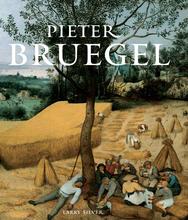With over 80 different games being played in Children’s Games, Pieter Bruegel the Elder gave us quite the formidable bout of "I spy."
Let’s play. I spy a conga line. Yes, right there in the top right near the kids playing duck duck goose. I spy kids riding a fence as if it were a railing of a staircase. There, just below the arches of the castle and to the left of the mock wedding. Last one: I spy a kid twirling dung with a stick. She’s in the bottom of the painting and in the middle of the road next to a bunch of other kids. Wait, ew.
Believe it or not, this I spy mechanic might have been a function of the painting. It was popular for refined intellectuals of the sixteenth century to be discerning viewers of detail-rich artworks. They would gather around paintings at parties, presumably with their pinkies raised high while their eyes bounded about the paint trying to find the richest material possible for conversation. Pieter Bruegel the Elder’s other paintings, like Netherlandish Proverbs, also showcase this near encyclopedic interest in cramming as much visual information into a single frame as possible. The thought of being a show-off by being able to spot something might seem preposterous to us today, but it sure sounds fun.
For this painting, Bruegel the Elder was most likely influenced by Erasmus, a sixteenth century humanist of the northern renaissance. Erasmus thought that play was an essential part of a proper child’s upbringing, understanding that play and learning were not necessarily separate things. If you look at some of the more scatological games here (if you can even call them that), like the child peeing or that kid stirring poo, they look more like they’re conducting an experiment than having a laugh. These are kids having fun and enjoying their own strange curiosities.
Others have read it as a metaphorically ladened portrait, with every game played having some esoteric social commentary. Such interpretations are anachronisms that don’t take into account what was going on at the time, because this was turning the painting into a 17th century exercise of hiding meanings in emblems. Don’t forget that this is a 16th century painting, critics. Or maybe this is all a game; if so, play on.





















I love these where's waldo types of artworks!